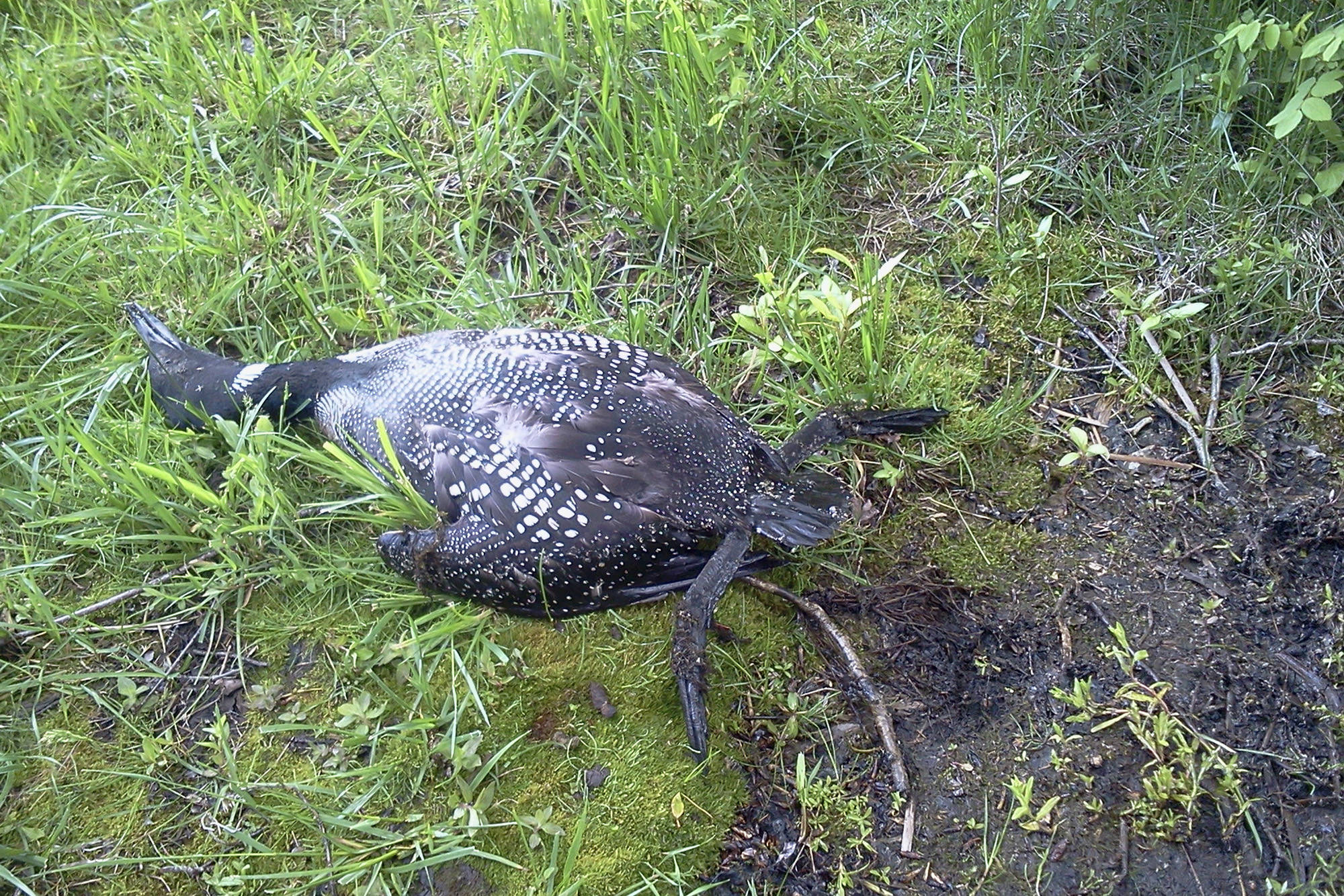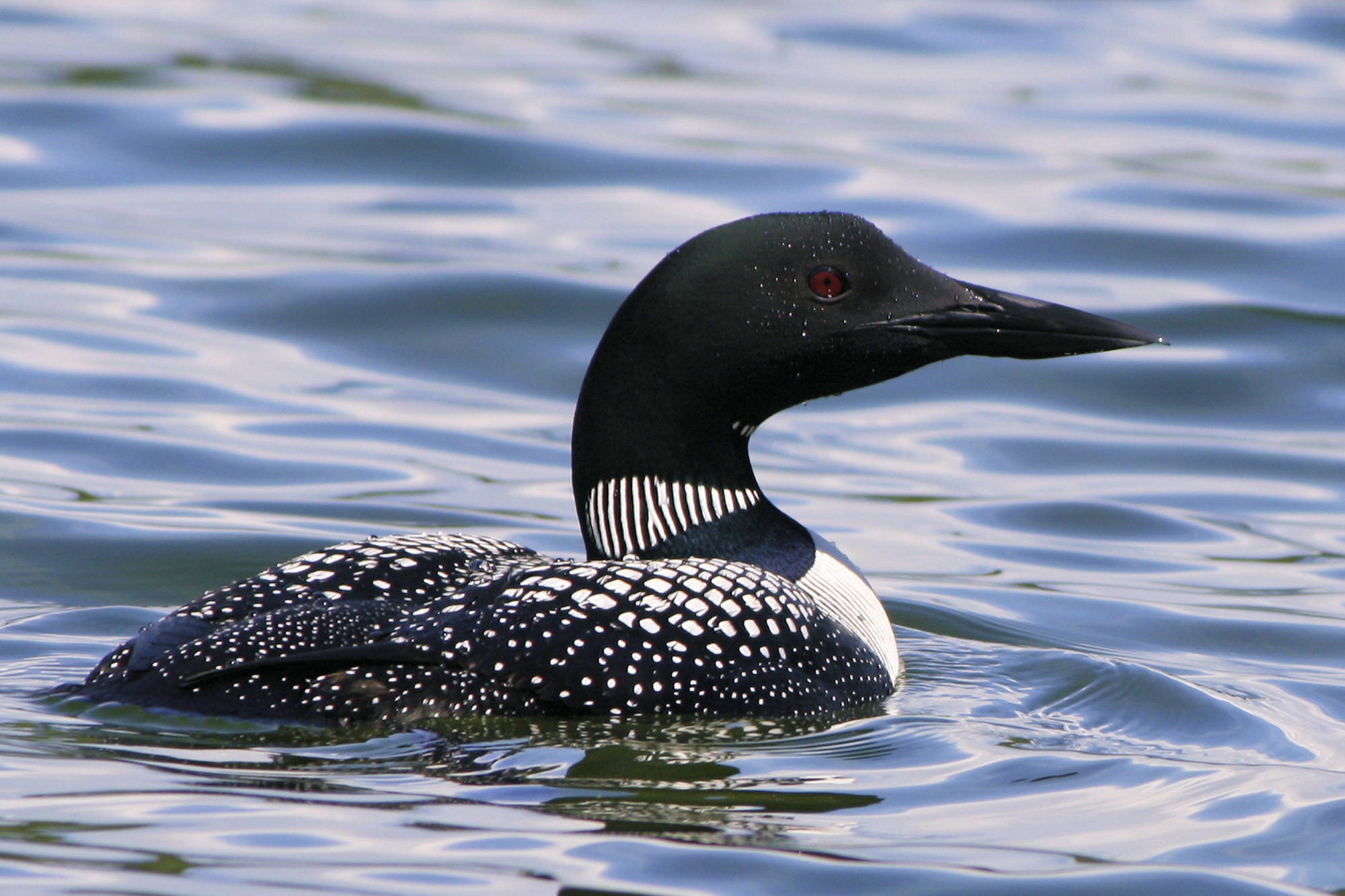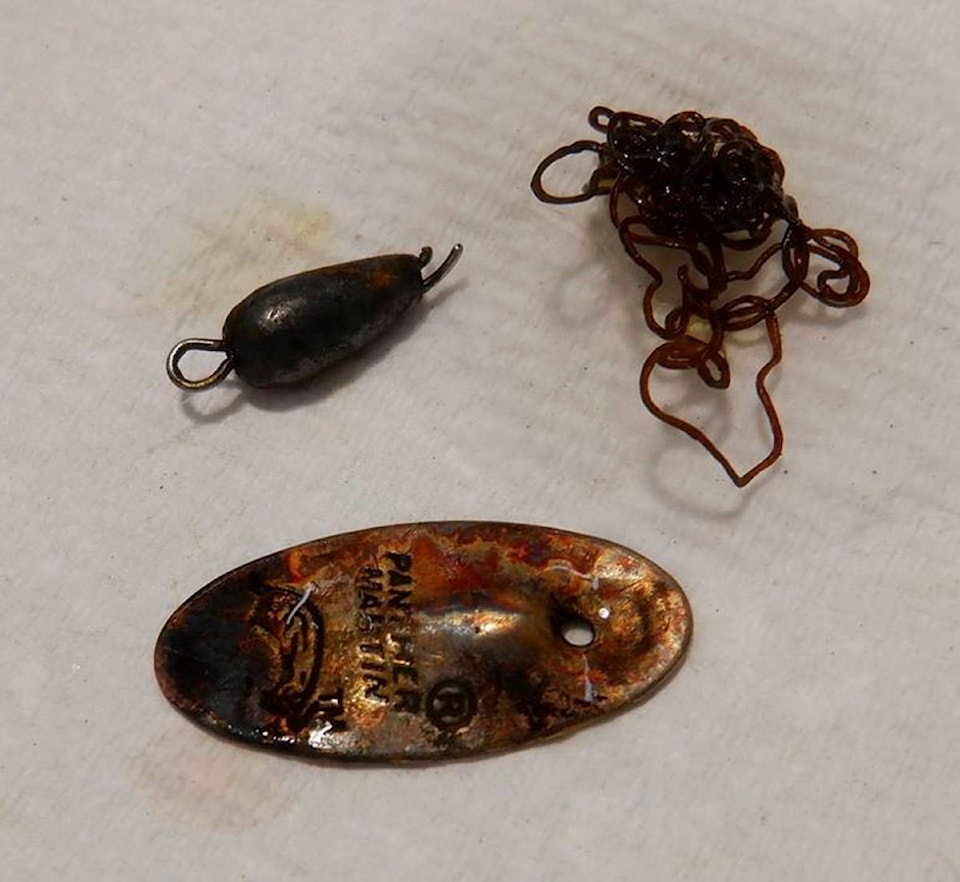The mournful evening songs of a loon have been heard recently at Gardom Lake.
These are not usual sounds but the cries of a resident female loon who is lamenting the loss of her mate, surmised Liz Gudrun Winter, a lake resident and president of the Gardom Lake Stewardship Society.
On June 4, a dead male loon was found on the lakeshore. He hadn’t been dead for long, so residents froze the body and shipped it to an Environment Canada lab for a post-mortem.
In the loon’s stomach was found fishing gear: a lead sinker as well as a spinner and fishing line. But the spinner and the fishing line did not kill him. Toxicology reports revealed the mature male died of lead poisoning.
Winter and her spouse affectionately called him Mr. Gavia Immer, the Latin name for the common loon. He was one of just two resident loons – the other, his mate.
“He’s a long-time resident,” Winter said, having lived herself at the lake for 35 years and her spouse, 45. “He’s truly a fixture at the lake. Everyone who comes listens to his song. I think everyone is attached to the loons.”
Not only has he left his spouse alone, it leaves future hatchlings in question, she said.
“I think they mate for life. It was really upsetting to find him.”
Read more: 2017: Protecting Gardom Lake
Read more: Province says park will stay in community group’s hands
A 2003 study from the Canadian Wildlife Society entitled ‘Lead fishing sinkers and jigs in Canada: Review of their use patterns and toxic impacts on wildlife’ shows the Gardom Lake issue is not a new one.
It stated that lead sinker or jig ingestion is the single most important cause of death of adult Common Loons reported in Canada and the United States, commonly exceeding deaths associated with entanglement in fishing gear, trauma and disease.
The study also stated that lead fishing weights that weigh less than 50 grams or are smaller than two centimetres in any dimension are generally the size that has been found to be ingested by wildlife.
Winter said directors of the Gardom Lake society would like to explore having fly fishing only at the lake and work towards a ban on lead weights. They also mention that loons are diving ducks attracted to flashy fishing lures, so people should refrain from trolling their tackle in the vicinity of the birds.
Winter said she’s not against fishing, she’s just against the use of lead sinkers that are toxic to wildlife.
The Gardom Lake loon pair have been nesting near Winter’s home for years so she notices the changes in the sounds they make. She’s heard special songs when the eggs hatch, with little gentle vocalizations. And recently, the songs of loss at late night and in the early morning.
“The night cries have just been really, really mournful,” she said. “To have one of them gone from a preventable reason is very sad.”
marthawickett@saobserver.net
Like us on Facebook and follow us on Twitter


